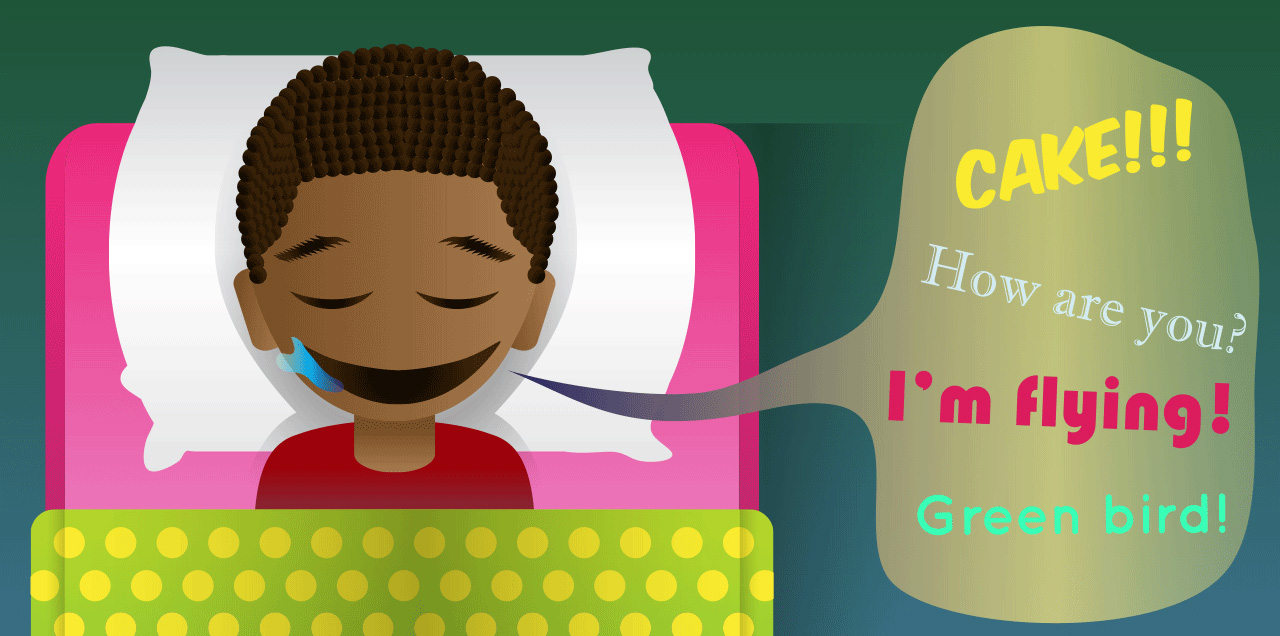- Empty cart.
- Continue Shopping
How to Recognize and Address Sleep Talking in Children

Sleep talking, also known as somniloquy, is a sleep disorder that involves verbalizing thoughts and emotions while asleep. While it’s generally harmless and can occur at any age, it’s particularly common among children. As a parent, you might find it concerning to hear your child talking, mumbling, or even shouting during sleep.
Recognizing Sleep Talking
Timing
Sleep talking can occur at any stage of sleep but is most commonly observed during the lighter stages of non-REM sleep.
Types of Utterances
The content can range from simple mumbling or gibberish to full sentences and complex dialogues. Sometimes the speech is clear and easy to understand, while other times it may be nonsensical or hard to decipher.
Frequency and Duration
The frequency of sleep talking episodes can vary. Some children may experience it only occasionally, while others may have episodes several times a week.
Common Triggers
- Stress and Anxiety: Emotional stress can be a significant trigger for sleep talking.
- Sleep Deprivation: Lack of adequate sleep can contribute to various sleep disorders, including sleep talking.
- Illness: Fever or sickness can temporarily increase episodes of sleep talking.
When to Seek Professional Help
- Persistent Episodes: If sleep talking persists for an extended period or increases in frequency, it may be advisable to consult a healthcare provider.
- Associated Behaviors: If sleep talking is accompanied by other sleep disorders like sleepwalking or night terrors, professional evaluation is recommended.
- Daytime Impairment: If your child seems excessively sleepy or has difficulty focusing during the day, it might be a sign of a more serious sleep issue.
Addressing Sleep Talking
Create a Calm Sleep Environment
- Bedtime Routine: Establish a consistent bedtime routine to help your child relax before sleep.
- Limit Stimulants: Avoid caffeine and sugar close to bedtime.
- Comfort Items: Sometimes a favorite blanket or stuffed animal can provide emotional comfort, reducing stress and potentially minimizing sleep talking.
Open Communication
Talk to your child about their day and any concerns they might have. Sometimes discussing worries can alleviate stress that may contribute to sleep talking.
Keep a Sleep Diary
Maintaining a sleep diary can help you identify patterns or triggers. Note the times when sleep talking occurs, any discernible content, and other sleep behaviors.
In summary, sleep talking in children is generally harmless and often decreases with age. However, understanding the triggers and knowing when to seek professional help can provide peace of mind. Simple strategies like creating a calming bedtime environment and keeping open lines of communication can go a long way in addressing the issue. If you’re concerned about persistent or disruptive sleep talking, don’t hesitate to consult a healthcare provider for a comprehensive evaluation and tailored advice. After all, a good night’s sleep is crucial for your child’s health and well-being.








